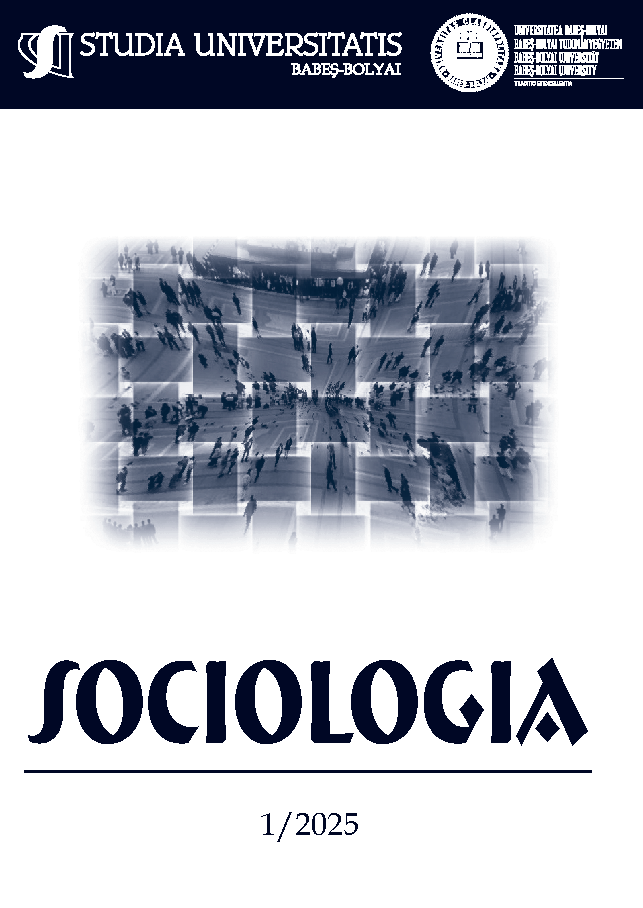“IT’S QUICKLY OVER AND EASILY ACCESSIBLE”: SOCIOLOGICAL INSIGHTS INTO NON-INVASIVE AESTHETIC SURGERY AMONG WOMEN IN CROATIA
DOI:
https://doi.org/10.2478/subbs-2025-0001Keywords:
aesthetic surgery, non-invasive procedures, body, modernity, identityAbstract
Aesthetic surgery is a global phenomenon, with millions of users worldwide. This study explores the sociological dimensions of non-invasive aesthetic procedures, based on semi-structured interviews with 18 women in Croatia who have undergone such treatments, primarily dermal fillers and Botox, most commonly applied to the face area. The analysis identified a range of motivations, including dissatisfaction with body image, the desire to reduce visible signs of ageing, enhance appearance, and improve quality of life. For some, exposure to social media, particularly Instagram, and global celebrity culture served as inspiration. However, most participants framed their decisions in terms of personal aspirations for self-enhancement rather than conformity to dominant beauty ideals. Body image prior to the procedures ranged from negative to positive. Most participants reported increased satisfaction following treatment, and many noted that their appearance became a frequent subject of social commentary, revealing the potential for stigma directed at those who engage in aesthetic modification. Nearly all expressed interest in further procedures, whether to maintain current results or pursue new goals. These findings suggest that aesthetic surgery is a complex phenomenon in which the body becomes a site of transformation and potential, shaped by late modernity’s emphasis on self-actualisation and the body as an ongoing identity project.
References
Adams, Josh (2009). Bodies of Change: A Comparative Analysis of Media Representations of Body Modification Practices. Sociological Perspectives, 52 (1): 103-129.
Alotaibi, Ahmed S. (2021). Demographic and Cultural Differences in the Acceptance and Pursuit of Cosmetic Surgery: A Systematic Literature Review. Plastic and reconstructive surgery. Global open, 9 (3): 1-7.
ASPS - American Society of Plastic Surgeons (2023). Procedural Statistics Release. URL: https://www.plasticsurgery.org/documents/news/statistics/2023/plastic-surgery-statistics-report-2023.pdf (15/May/2025).
Bauman, Zygmunt (2000). Liquid Modernity. Cambridge: Polity Press.
Beck, Ulrich (1992). Risk Society: Towards a New Modernity. London: Sage Publications.
Blumer, Herbert (1969). Symbolic Interactionism, Perspective and Method. New York: Prentice-Hall.
Braun, Virginia and Clarke, Victoria (2006). Using thematic analysis in psychology. Qualitative Research in Psychology, 3 (2): 77–101.
Brstilo Lovrić, Ivana (2018). Potrošnja i nove tehnologije među mladima u Hrvatskoj analiza potrošačkih stilova i praksi studenata Sveučilišta u Zadru i Zagrebu. Zadar: Sveučilište u Zadru.
Brstilo Lovrić, Ivana, Zujić, Paula and Škomrlj, Matea (2023). About the Profile of Interested Aestheticians or Students of the City of Zagreb. Kroatologija, 14 (1): 361-384.
Crockett, Richard J., Pruzinsky, Thomas and Persing, John A. (2007). The influence of plastic surgery ‘reality TV’ on cosmetic surgery patient expectations and decision making. Plastic & Reconstructive Surgery, 120 (1): 316-24.
Crook, Peta S. and Dwyer, Angela (2016). No longer raising eyebrows: The contexts and domestication of Botox as a mundane medical and cultural artefact. Journal of Consumer Culture, 0 (0): 1-23.
Elliott, Anthony (2011). ‘I Want to Look Like That!’: Aesthetic Surgery and Celebrity Culture. Cultural Sociology, 5 (4): 463–477.
Featherstone, Mike (2007). Consumer Culture and Postmodernism (2nd ed.). London: Sage Publications.
Giddens, Anthony (1990). The Consequences of Modernity. Cambridge: Polity Press.
Giddens, Anthony (1991). Modernity and Self-Identity. Self and Society in the Late Modern Age. Cambridge: Cambridge University Press.
Goffman, Erving (1959). The Presentation of Self in Everyday life. New York: Anchor Books.
Hatef, Azeta (2017). From under the veil to under the knife: women, aesthetic surgery, and the politics of choice in Afghanistan. Feminist Media Studies, 18 (1): 1-17.
Holliday, Ruth and Cairnie, Allie (2007). Man Made Plastic: Investigating men’s consumption of aesthetic surgery. Journal of Consumer Culture, 7 (1): 57-78.
Holliday, Ruth and Sanchez Taylor, Jacqueline (2006). Aesthetic Surgery as False Beauty. Feminist Theory, 7 (2): 179-218.
ISAPS - International Society of Aesthetic Plastic Surgery (2023). International Survey on Aesthetic/Aesthetic Procedures performed in 2023. URL: https://www.isaps.org/media/rxnfqibn/isaps-global-survey_2023.pdf (15/May/2025).
Markey, Charlotte N. and Markey, Patrick M. (2009). Correlates of young women’s interest in obtaining cosmetic surgery. Sex Roles, 61 (3):158-66.
Mead, George H. (1934). Mind, Self and Society. Chicago: University of Chicago Press.
Morgan, Kathryn P. (1991). Women and the Knife: Cosmetic Surgery and the Colonization of Women’s Bodies. Hypatia, 6 (3):25-53
Sarwer, David B., Magee, Leanne and Clark, Vicki (2003). What is beauty? Physical appearance and cosmetic medical treatments: Physiological and sociocultural influences. Journal of Cosmetic Dermatology, 2 (1): 29-39.
Shilling, Chris (2012). The Body and Social Theory. Third Edition. London: Sage Publications.
Tait, Sue (2007). Television and the domestication of cosmetic surgery. Feminist Media Studies, 7 (2): 119-35.
Thompson, Joel K., Heinberg, Leslie J., Altabe, Madeline N. and Tantleff-Dunn, Stacey (1999). Exacting beauty: Theory, assessment, and treatment of body image disturbance. American Psychological Association.
Tranter, Bruce and Hanson, Dallas (2015). The social bases of cosmetic surgery in Australia. Journal of Sociology, 51 (2): 189–206.
Turner, Bryan S. (2008). The Body and Society. Third Edition. London: Sage Publications.
Downloads
Published
How to Cite
Issue
Section
License
Copyright (c) 2025 Studia Universitatis Babeș-Bolyai Sociologia

This work is licensed under a Creative Commons Attribution-NonCommercial-NoDerivatives 4.0 International License.



